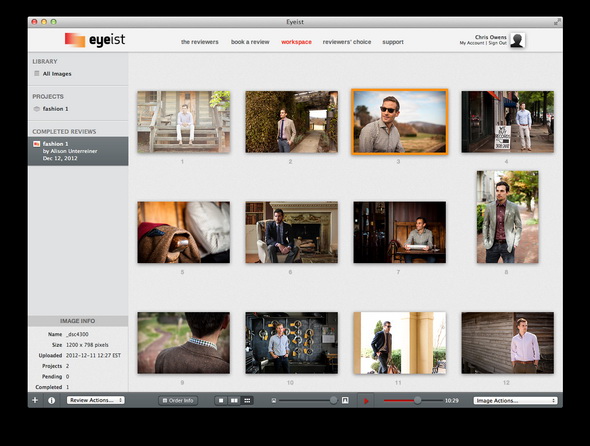 If you wonder if it’s still possible to build a photography business that is both creatively satisfying and financially viable, I encourage you to read “The ASMP Guide to New Markets in Photography.”
If you wonder if it’s still possible to build a photography business that is both creatively satisfying and financially viable, I encourage you to read “The ASMP Guide to New Markets in Photography.”
Although it’s an insightful, reassuring book, it’s not quite what I was expecting. From the title, I expected to read an overview of emerging photography markets with advice on how to break into each market.
Instead, this book is a collection of essays by veteran photography pros who have rebuilt their own pathways to success in the fast-changing world of imaging.
The book was published by the American Society of Media Photographers (ASMP), an association known for its advocacy of photographers’ rights and education in imaging workflows and business practices. The book was edited by former ASMP president Susan Carr. (Tragically, she died at age 49 in September, 2012, the same month the book was released.)
Some topics discussed in this guide include:
- new visual needs and the shifting distribution of clients in the new economy
- the changing definition of what it means to be a photographer
- the impact of technology and the rise of amateurs
- updated approaches for copyright, licensing, compensation, and contracts
- advice on building a business plan, marketing, and selling
Although this self-help guide was written for professional photographers, many of the ideas can inspire freelance writers and designers as well. The book is packed with practical advice for evaluating your strengths and limitations and using that information to develop creatively satisfying, financially sustainable business models that will work for you.
The first five chapters provide a big-picture overview of how photographers are moving beyond the era of conflict caused by disruptions in technology and traditional methods of compensation. Chapters 6-11 discuss ways you can update your own thinking and develop a viable plan for moving forward. Chapters 12-14 feature “business biographies” of 50 visual artists who have successfully moved into new markets for imaging services.
Here’s a quick overview of the fourteen chapters.
Chapter 1: Where Are The Clients?
Susan Carr summarized disruptive changes in technology and the economy that have required photographers to rethink their business practices. She talked about the transition from film to digital photography, the rise of low-cost stock photography, the influx of amateurs and part-timers, the effects of business consolidation, and changes in how companies market their products.
Carr realized that “The downward pressure on my pricing and requests for all rights to my images was not being primarily driven by stock photography or the shift to digital imaging over film…but rather by the simple fact that the old ways of marketing that my clients relied on to increase their profits were no longer working. The investments they were making in photography, graphic design, advertising agencies, printing, and paid media space were now an expense that had no guaranteed return. The economic model that I built my entire business on was falling apart.”
Chapter 2: Visual Communications in the New Economy
Visual journalist and multimedia expert Tom Kennedy discusses dramatic changes in media production and consumption, the growing role of amateur photographers, and where the professional fits into the picture. He suggests that “The flood of amateur photography activity is creating a heightened awareness of the value of images as a medium.” He believes quality images will be crucial to gaining consumer attention in an era in which text is being complemented by a rich-media language that combines still photography, video, audio, and graphical information.
Chapter 3: The Role of Technology
Photographer Peter Krogh, who published a book on digital-asset-management for photographers, emphasizes the importance of watching technology and analyzing how it might impact your business. Because there’s not much we can do to slow technology down, your business-survival strategy should be rooted in a “good evaluation of where we’re going, and how inevitable changes will affect the practice of your craft and the shape of the marketplace.”
Chapter 4: The Ongoing Tug of War between Copyright Law and Technology
Photographer Richard Dale Kelly discusses the struggles that photographers face protecting their copyrights in an era of rapid innovations in publishing technology and business models.
Chapter 5: Where Are the Solutions That Create Compensation?
Richard Dale Kelly explains how independent creators of visual content can use licensing and business contracts to build sustainable careers. He predicts that instead of relying on a dominant business model, creative professionals will need to use many business models that provide multiple income streams.
Chapter 6: Your First Step
Photographer and business-growth consultant Judy Hermann provides practical exercises that can help you clarify your vision for your career. Her tips can help you define what success means to you, set and implement goals, and start building a career that is both creatively and financially satisfying.
Chapter 7: Your Roadmap
Judy Herrmann outlines a step-by-step guide to building a working business plan, so you can assess the viability of your ideas and make adjustments before you have invested too much time or money. As she puts it: “If you learn that your initial ideas aren’t viable, go back to your core values, focus on why you want what you want, and use your creative problem-solving skills to come up with business ideas and solutions that will meet both your needs and those of your buyers.”
Chapter 8: Branding Your Business
Communicatrix Colleen Wainwright explains how branding relates to your career goals and how to establish a strong, memorable brand in today’s media-rich culture. She points out that a brand isn’t what you tell people you are. Rather, it’s about how people perceive you: “What people will remember and respond to are experiences with you that are great or even awesome.”
Chapter 9: Marketing Today
Colleen Wainwright illustrates how to integrate marketing into every facet of your business and use contemporary tools to get your message heard. Instead of trying to master every fast-changing social-media channel, choose the network that makes the most sense for your goals, and focus on three principles: be useful, be specific, and be nice.
Chapter 10: Selling in the New Economy
Photographer Blake Discher provides tips and tools for honing and refining your sales techniques. He talks about the need to find good clients, understand your competitive advantage, develop a targeted prospect list, build your network, provide get referrals and appointments, and quote jobs.
Chapter 11: Changing Your Course
Judy Hermann discusses how to embrace and manage three types of changes: diversification, adaptation, and reinvention. She emphasizes that “The sooner you notice a trend, the more time you have to internalize new information, draw appropriate conclusions, connect seemingly unrelated dots, and reframe your thinking. Plus, changing the course of your business or career won’t happen overnight. It will take time, money, and effort to figure out what to change and how to change it, get buy-in from clients, and make the change self-sustaining.”
Chapter 12: New Products and Services
Barry Schwartz profiles photographers who have expanded by adding new products or services to their businesses. For example, Mark Green talks about how income from video production services has replaced revenues he once earned from shooting photos for annual reports.
Chapter 13: Marketing and Sales Focus
In this chapter, Barry Schwartz highlights photographers who are using new and traditional marketing to adapt and grow in a new economy. For example, Andrew Eccles talks about reverting to time-tested methods of getting work –through face time, pounding the pavement, meeting with people, and creating fresh, new, and relevant work.
Chapter 14. New Business/Photographer Identity
Barry Schwartz interviews photographers who have responded to changed industry conditions by redefining how they identify themselves and their business. Walt Jones observes that the kind of business he did in the late 1990s and early 2000s is very different from the computer-generated imagery work he is doing now: “I’ve worked hard to get people to see me as a simply a creator of images, not as a photographer or a CGI-producer. In the end, I’m going to use whatever tools are appropriate to the task at hand, so I try not to pigeonhole myself.”
When I read self-help books, the authors seem more credible when some of their advice meshes with some of my own observations. In this book, the authors make the point that some photographers are doing just fine without using every new social-media channel that pops up or feeling the need to adopt every “tip and trick” that a marketing guru might recommend.
Colleen Wainwright urges readers to “Bring your full creativity and 100 percent authentic self to your marketing, just as you do to your photography. Your work is indelibly yours, so must your marketing be.”
In the book’s opening chapter, Carr emphasizes that: “Photographers must define what they can bring to the table that is rare, and that brings us back to creativity…The reality is that most independent working photographers only need a handful of customers to make a good living.” By using some of the many marketing tools now at our disposal, we can find “loyal clients who value our unique product and compensate us fairly for it.”
LINKS
The ASMP Guide to New Markets in Photography
About ASMP
 Through interviews with photographers and ASMP experts, the guide addresses topics such as major trends in copyright today, how to incorporate copyright registration into a daily workflow, and the risks of joining social networks.
Through interviews with photographers and ASMP experts, the guide addresses topics such as major trends in copyright today, how to incorporate copyright registration into a daily workflow, and the risks of joining social networks.








